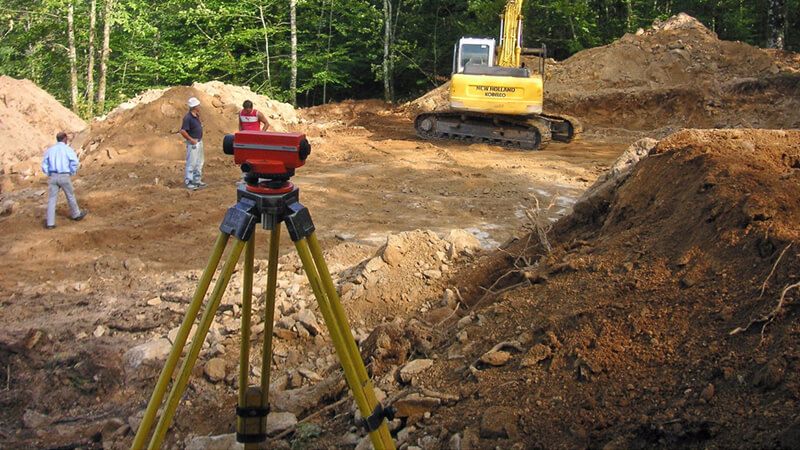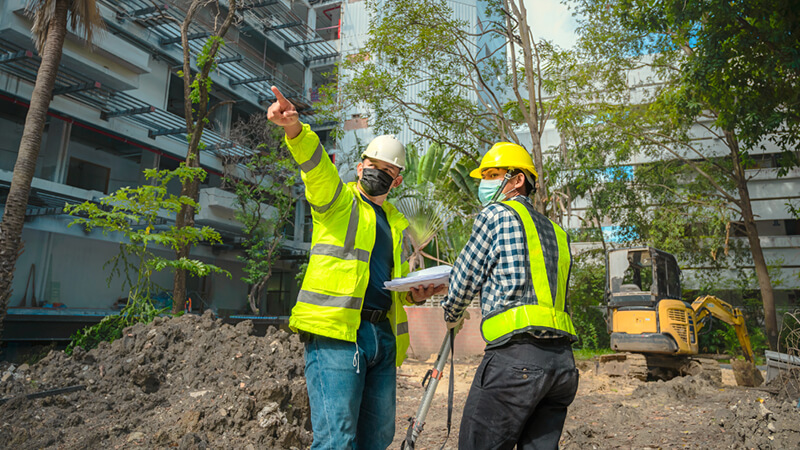Expert Guide: How to Measure Rock Excavation

Accurately measuring rock excavation is vital for successful construction projects.
Knowing how to measure rock excavation allows contractors to bid correctly, manage resources efficiently, and avoid costly mistakes. Using the right tools and methods significantly impacts precision.
In this blog, we'll discuss the essential techniques and tools for measuring rock excavation. We'll cover everything from calculating soil quantities and understanding the swell factor to using advanced digital terrain models.
You'll also discover how equipment like RockZone Americas’ rock grinders and rockcrushers can help you tackle challenging excavation tasks with greater efficiency and accuracy. Read on to get the insights you need for efficient and precise rock excavation.
Key Takeaways
- Accurate measurement in rock excavation is crucial for effective project management and cost control.
- Combining traditional methods with advanced technology enhances precision in calculating excavation volumes.
- Regular monitoring and recalculating ensure that excavation estimates remain accurate despite site changes.
Understanding Rock Excavation
Rock excavation involves removing rock from a construction site to reach the desired depth and create a suitable work area. This process is significant in various projects, such as building foundations, road construction, and utility installations.
Different types of rock present unique challenges. Hard rock demands intensive methods such as blasting or using a rock grinder, while rippable rock can be efficiently removed with standard excavation equipment.
Each project requires specific techniques tailored to the rock type and site conditions. Building foundations demand precise excavation for stability, while road construction prioritizes balanced cut and fill to maintain grade and surface evenness.
Key Elements in Measuring Rock Excavation
Accurate rock excavation measurement is crucial for project success, influencing everything from budget estimates to resource allocation. Here are some key concepts and factors that drive effective rock excavation measurement.
Soil quantities and swell factor
Soil quantities change significantly from their natural state after excavation. This expansion, known as the swell factor, must be factored into volume calculations. The swell factor impacts project estimates because loose material occupies more space than its original compact form.
Volume measurement in cubic yards
Using cubic yards to measure excavation volumes maintains consistency and accuracy. This standard unit allows contractors and project managers to communicate effectively and ensure uniform calculations.
Types of soil and their characteristics
Each soil type—loam, clay, sand—affects excavation measurements differently. Loam is generally easy to excavate and compact, while clay poses challenges due to its density and moisture retention.
Steps to Measure Rock Excavation

For building foundations, road construction, or utility installations, measurements need to be spot-on to avoid costly mistakes. Here’s how to approach rock excavation measurement from the first survey to the final calculation.
Initial site survey
The starting point in measuring rock excavation is the initial site survey. This step sets the stage for accurate volume calculations by defining the site's dimensions and characteristics.
Capturing the site’s dimensions—length, width, depth, and thickness—allows for precise calculation of the material volume to be excavated. Without accurate measurements, contractors might misjudge the amount of earth and rock involved, leading to unexpected expenses or delays.
Factors affecting survey accuracy
Instrumental errors can arise from poorly calibrated equipment. Personal errors often stem from oversight or misjudgment. Natural factors, such as erosion or surface changes, add to the complexity.
To maintain precision, use well-maintained tools and double-check measurements.
Role of benchmarks and the necessity of validating them
Benchmarks serve as vital reference points during excavation. These fixed markers anchor your calculations, ensuring consistency across the entire site.
Validating benchmarks is crucial. Environmental changes can cause shifts, and overlooking this step risks inaccuracies that could disrupt the project.
Onsite reconnaissance
Walking the site offers a firsthand view of the terrain, revealing obstacles that might not appear in initial surveys. It provides the opportunity to confirm that the survey data matches actual site conditions.
Surface changes might have occurred since the last survey, requiring adjustments to the calculations. This step is particularly important in areas affected by natural factors like erosion, vegetation growth, or water flow, which can alter the landscape.
These elements can significantly impact the excavation depth and volume. For instance, new growth might obscure rocky outcrops, while erosion could expose more rock, complicating the process. Spotting these factors early allows for refined excavation plans and accurate measurements.
How to Calculate the Volume of an Excavation?
Calculating excavation volumes precisely is vital for efficient project management and cost estimation. Here are some proven methods contractors use to measure excavation volumes effectively.
Traditional calculation methods
Traditional calculation methods provide reliable ways to measure excavation volumes. Here are two commonly used techniques:
Cross-section method. This method involves dividing the excavation site into several vertical slices. Measuring the area of each cross-section and multiplying it by the distance between them gives the total volume.
This method is ideal for projects with consistent cross-sectional shapes, such as road construction and trenching.
Average end-area method. This method calculates the volume between two cross-sections by averaging their areas and multiplying the result by the distance between them. For example, if two cross sections have areas of 50 and 70 square feet and are 100 feet apart, the volume is 6000 cubic feet:
This straightforward method is commonly used for linear projects like pipelines and roadways.
Advanced calculation methods
Advanced calculation methods offer greater precision and are ideal for more complex sites. Here are two key techniques:
Triangulated irregular network (TIN). TIN models use a network of triangles to represent the surface of the excavation site. Connecting survey points with triangular facets, TIN models create a detailed and accurate digital terrain model.
This method is ideal for complex projects with varying terrain, enabling contractors to account for every subtle change in the surface.
Digital terrain models (DTM). These models calculate volumes between two surfaces, such as the existing ground and the proposed excavation depth.
DTMs take into account various site features, including slopes, vegetation, and topsoil, to provide comprehensive volume calculations. This is invaluable for large-scale projects where high precision is required.
Tools and Technology for Rock Excavation Measurement
Rock excavation involves managing various materials, dimensions, and site conditions, which can make accurate volume calculation a challenge. The right tools and technology simplify this process, providing the precision contractors need.
Surveying equipment. This equipment is fundamental to accurate rock excavation measurement. Modern tools like Total Stations and GPS systems deliver detailed data, covering everything from trench depth to material thickness.
Total stations and GPS systems. Total Stations combine electronic distance and angular measurements, offering precise data essential for calculating excavation volumes.
GPS systems enhance this by providing real-time location data, crucial for maintaining accuracy across the site.
Laser scanners. These tools create detailed 3D models of excavation sites, capturing every surface detail. These models are particularly useful for projects with varying terrain or complex dimensions, such as retaining walls or foundations.
Measurement software. This software converts raw data from surveying equipment into actionable insights, simplifying the process of calculating excavation volumes and improving accuracy.
Trimble and Roctek software. These industry-standard tools streamline the calculation process. They assist in everything from initial site surveys to final volume measurements, making them indispensable for contractors aiming to reduce errors and optimize workflow.
Additional Strategies to Ensure an Accurate Estimate
In rock excavation, getting the volume calculations right is crucial. If you're a contractor looking to calculate the volume of material for rock excavation, here are tips that can help you get accurate results.
Optimize cut and fill volumes. To keep your project efficient, calculate the volume of rock and earth to balance cut and fill. This optimization reduces costs and streamlines the process.
Use multiple calculation methods. Combine cross-section calculations with advanced models for more accurate results. This method resolves potential issues and enhances precision.
Monitor and recalculate regularly. Continuously monitor the site and recalculate as needed to adapt to changes. This practice keeps your estimates accurate and prevents disruptions.
Maximize Excavation Efficiency with RockZone Americas
After calculating the volume of materials for your rock excavation project, turn to RockZone Americas to make your excavation process more efficient.
With a legacy dating back to 1968, we specialize in advanced rock grinders, crushers, and screeners designed to handle the toughest challenges. Our equipment is crafted to meet your project's exact needs, whether it's cutting through hard rocks or managing complex site conditions.
Partner with RockZone Americas today and let our innovative solutions propel your project to the next level. Call us now to get started.
Summary
Accurate measurement is critical to the success of any rock excavation project.
When contractors precisely calculate volume, depth, and material quantities, they can manage resources efficiently and eliminate costly mistakes. Advanced tools and techniques like cross-section methods and digital terrain models enhance accuracy and streamline operations.
Prioritizing precise measurement leads to more efficient planning and execution, ensuring projects stay on track and deliver optimal results. Contractors who focus on accuracy will achieve superior outcomes in their excavation work.
Frequently Asked Questions
How to estimate rock excavation?
To estimate rock excavation, contractors calculate the volume of rock to be removed based on site dimensions, typically using methods like cross-section analysis or digital terrain models.
Factors such as rock type, site conditions, and required depth are considered. This helps in determining the quantity of material involved and planning the excavation process efficiently.
How do you measure excavation depth?
Excavation depth is measured by determining the vertical distance from the original ground level to the required depth of the trench or excavation site.
This measurement is crucial for calculating the volume of material to be removed and ensuring that the excavation meets project specifications.
How do you measure rock quantity?
To measure rock quantity, contractors calculate the volume of rock to be excavated using site dimensions like length, width, and depth. This volume is typically calculated in cubic yards or meters, considering factors such as the rock type and the excavation method.
